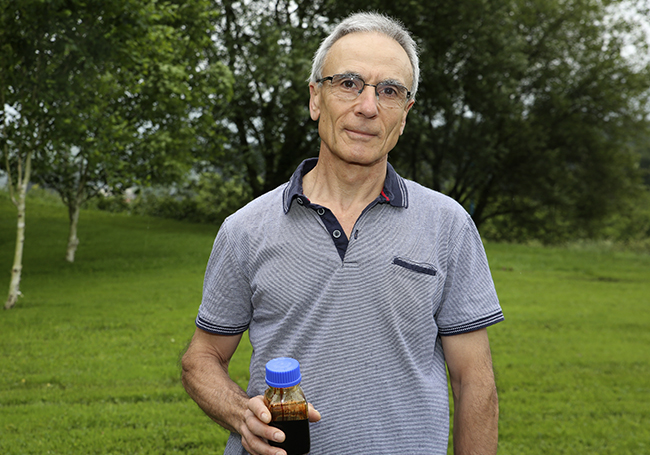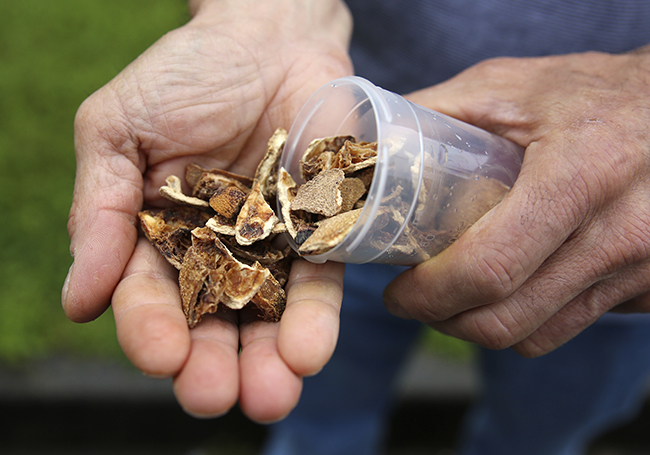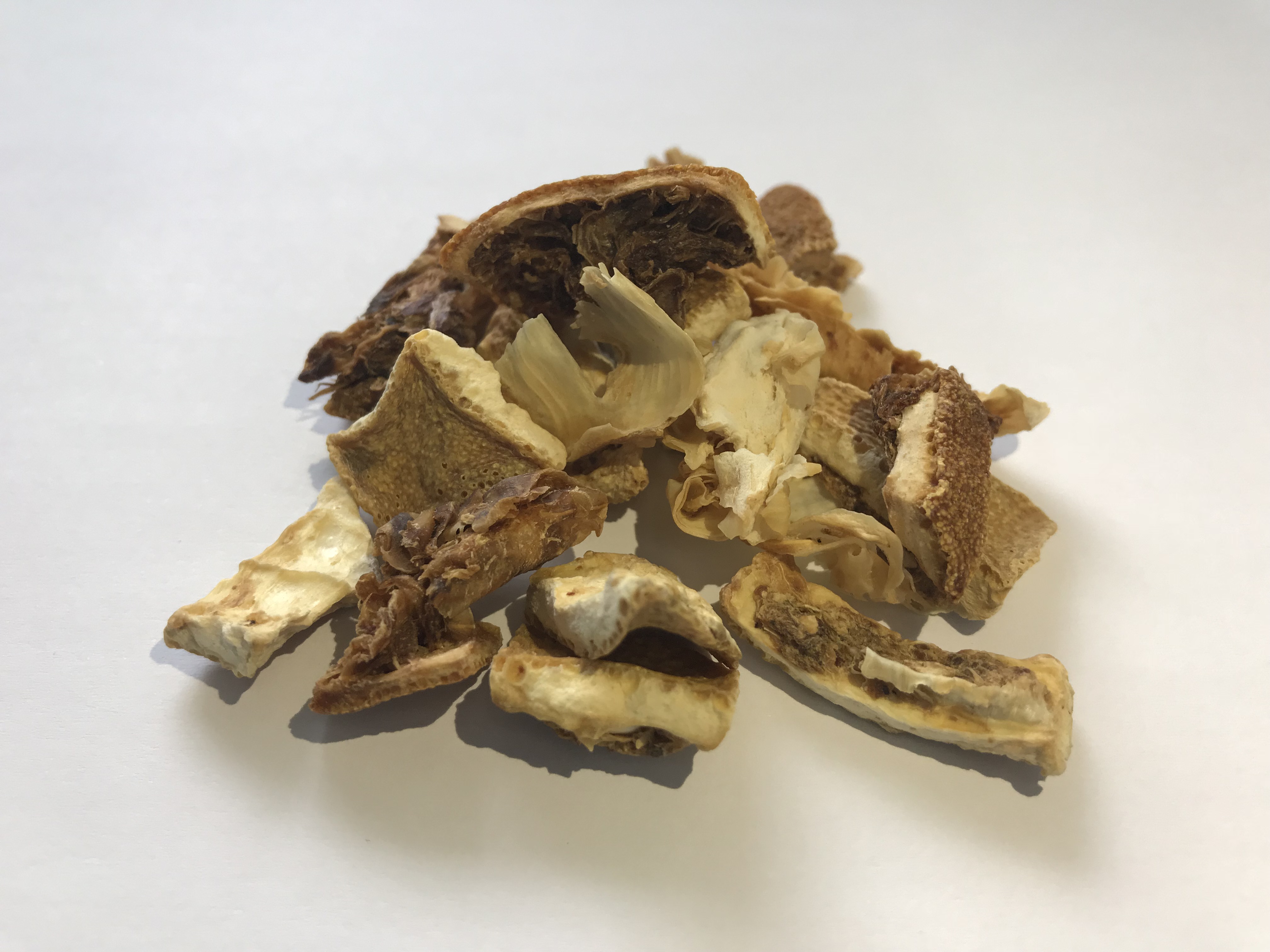The CPWV research group at the UPV/EHU, which is seeking solutions for residues of a whole range of origins using a reactor that it has built, has shown that bio-oil can be obtained by means of the fast pyrolysis of citrus waste from juice production plants, and is taking steps to build a large-scale pilot facility. They have secured a patent covering the improvements made to the reactor designed to handle these residues.
Citrus waste used to obtain bio-oil at the UPV/EHU
Besides finding the solution for a residue that is produced in large quantities, the CPWV research group has secured a patent
- Research
First publication date: 13/06/2018

Gradually replacing the use of fossil fuels calls for the study of various strategies to obtain biofuels, and there is added value in the fact that an outlet has been found for large quantities of residues generated as a result of human activity. A study conducted by the UPV/EHU’s research group Catalytic Processes & Waste Valorization in which Brazilian and Iranian universities have participated has shown that citrus residues are an abundant, cheap, available source of renewable energy.
The research came about as a result of a request from the Federal University of São Carlos due to the fact that in 2011, for example, nearly 9.3 million tonnes of waste was being generated as a result of juice production in Brazil. At the UPV/EHU bio-oil was obtained through the fast pyrolysis of this residue in a conical spouted bed reactor. The citrus waste is dried and cut up before being fed into the reactor, and after being pyrolysed at 500 ˚C, a 70-75% proportion of bio-oil is obtained.
“We have managed to find an outlet for the residues that accumulate in juice production plants. If these residues can be dried and pyrolysed at the plant itself, the bio-oil produced could be used in the boilers to provide the company with heat. In view of the fact that thousands of tonnes of residues are produced, any unused surplus bio-oil could be sent to refineries to obtain a nobler fuel,” said Dr Martin Olazar, head of the research. A Brazilian firm “has expressed its willingness to run a small pilot project”. They are awaiting a decision on a broader European co-operation project for the development of Brazil.
A patent resulting from the retrofit of the reactor
“Owing to the difficulty posed by processing the citrus fruits on their own, we began to process them mixed with sand. When coarse sand was used, very powerful pumps were needed in the reactor and that entailed a high cost, so we began to use fine sand but that escaped with the air and the gas. We had to fit a device to confine the air in the upper part, so we confined the spout and saw that this brought great advantages. So much so that we have patented the device,“ explained Prof Olazar.
At the UPV/EHU they developed prototypes of this new system, but to see what would happen on larger scales, the Iranian researchers conducted models to simulate the confinement system. “We were able to see which behaviour would be displayed by the confinement system with different dimensions and in different positions. The models developed are very good for predicting what would happen at greater levels”.
In another line of research they are working to find an outlet for the surplus bio-oil that is produced. “What happens is that refineries are fully equipped to work with petroleum and are reluctant to change. In other countries the refineries have been obliged to accept bio-oils of this type and here, too, something similar should be done,” pointed out Olazar. Likewise, in another of the group’s lines of research the production of hydrogen, rather than bio-oil, by using citrus waste in a two-phase process is being explored.
Additional information
Martin Olazar-Aurrekoetxea has a PhD in Chemical Engineering and is head of the Department of Chemical Engineering of the UPV/EHU’s Faculty of Science and Technology. The Catalytic Processes for Waste Valorisation research group is made up of 50 lecturers and researchers. The research was conducted at the UPV/EHU, but researchers from the following universities also participated in it: Federal University of São Carlos (Brazil), Isfahan University of Technology and the University of Ilam (Iran).
Patent
Altzibar, H., Pablos, A., Olazar, M., Aguado., R., Bilbao, J., Vicente, J., Varona, E.
Confinador de fuente para contactores de lecho en surtidor y contactor de lecho en surtidor [Source Confinement system for spouted bed contactors and spouted bed contactor]
Reference: P201730388
Holder: UPV/EHU
Operating company: Novattia S.L.
Bibliographic reference
- Valorization of citrus wastes by fast pyrolysis in a conical spouted bed reactor
- Fuel (2018 July 15; vol.224: 111-120)
- DOI: 10.1016/j.fuel.2018.03.028
- Evaluation of thermochemical routes for hydrogen production from biomass: A review
- Energy Conversion and Management (2018 June 1; vol.165: 696-719)
- DOI: 10.1016/j.enconman.2018.03.089








